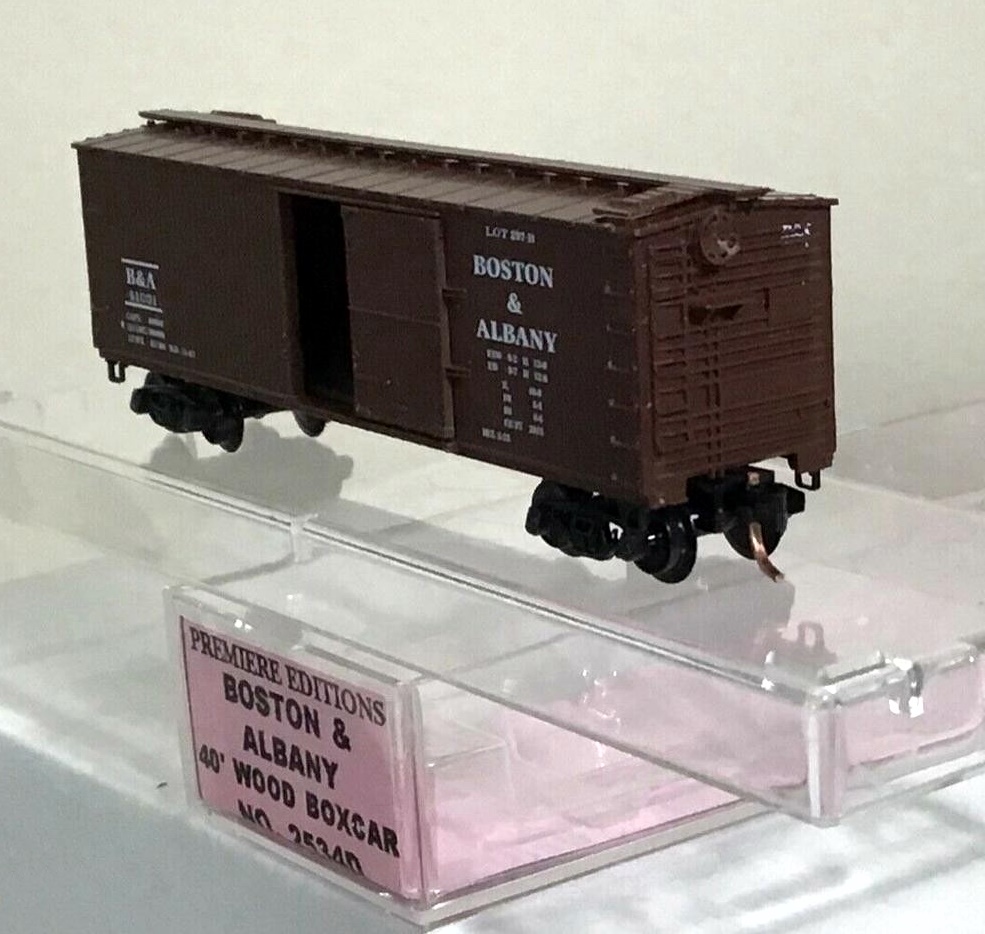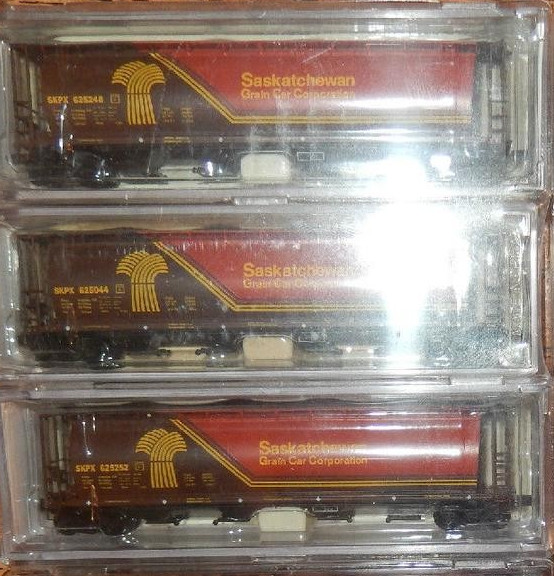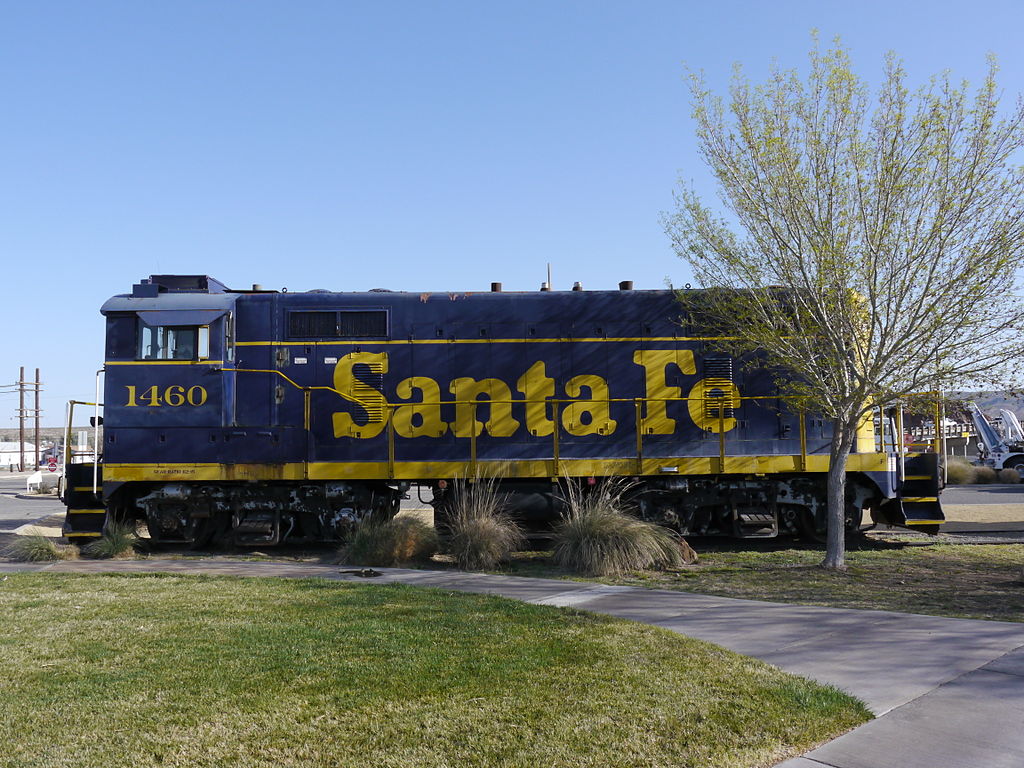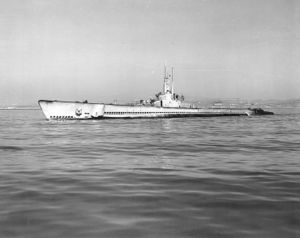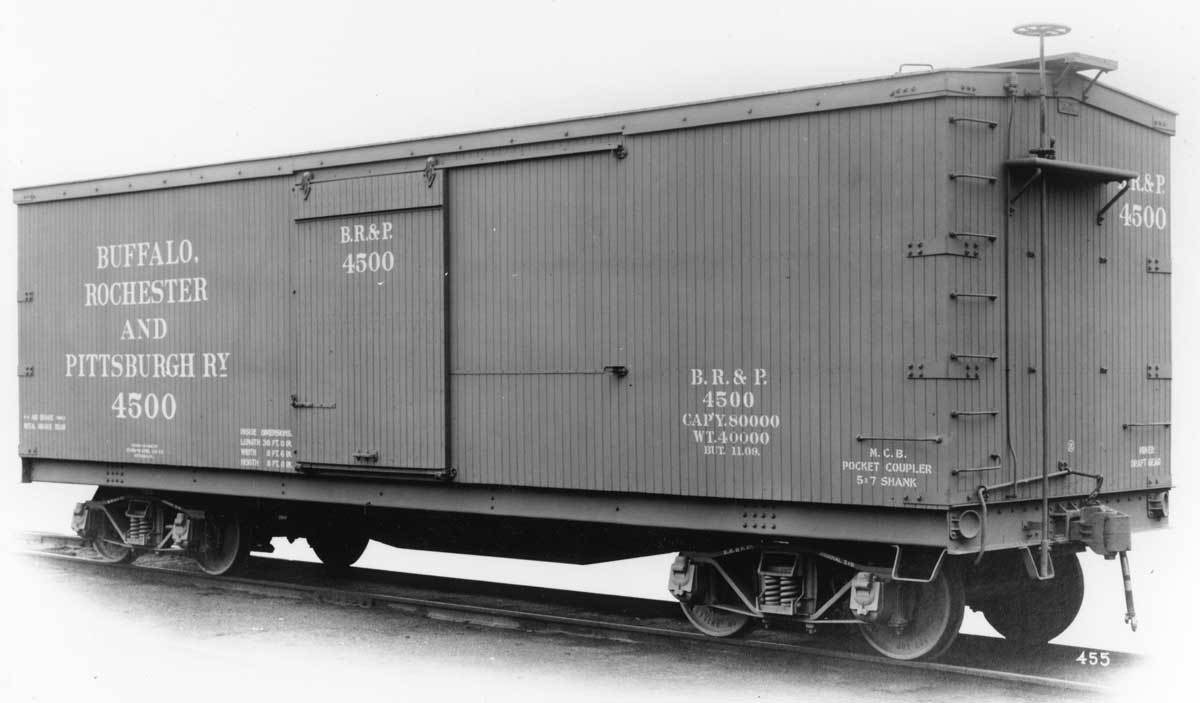Specific Item Information: Micro-Trains Line model decorated by The Freight Yard.
Model Information: Horizontal Brake Wheel is equivalent to Side-Mounted Brake Wheel. The wheel itself is vertical.
Prototype History: Double sheathed all-wood boxcars in 34', 36' or 40' length were built with trussrods into the 1900's. By about 1910-15 cars often were being built of wood but with steel underframes. BTW many early boxcars were only about 8-1/2' high, though taller 10' cars were beginning to be built by the WW1 era (like the USRA wood boxcar) but that didn't become the norm until the late 1930's.
Later in the 20's-30's, some cars were built with double or single sheathed woodsides but steel underframe, roof and ends. In the later 30's into the 40's some older cars built with wood except for the steel underframes were rebuilt with steel ends and roofs. Some of these cars with steel roof and ends (either new or rebuilt) lasted into the 1960's.
During WW2, steel was in short supply, so some new boxcars were built with steel roof and ends, but wood sides. These too sometimes lasted into the "diesel era", although many were rebuilt with steel sides after the war.
Later in the 20's-30's, some cars were built with double or single sheathed woodsides but steel underframe, roof and ends. In the later 30's into the 40's some older cars built with wood except for the steel underframes were rebuilt with steel ends and roofs. Some of these cars with steel roof and ends (either new or rebuilt) lasted into the 1960's.
During WW2, steel was in short supply, so some new boxcars were built with steel roof and ends, but wood sides. These too sometimes lasted into the "diesel era", although many were rebuilt with steel sides after the war.
Road Name History: 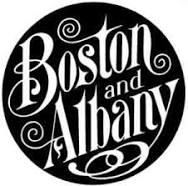 The B&A was the result of two mergers accomplished in phases between 1867 and 1870. The merged lines included the Hudson & Boston Railroad, the Albany & West Stockbridge, the Western Railroad (by that time a paper railroad operated by the A&WS), the Hudson & Berkshire and the Boston & Worcester. Construction continued until late in the century. The result was a line running from Boston, Massachusetts west to Worcester, Springfield, Pittsfield and on to Albany, New York, plus a number of branches. In 1900 the B&A was leased for 99 years by the New York Central & Hudson River, In 1914, the lease passed to New York Central Railroad. As during the NYC&HR period, Boston & Albany retained their own corporate identity during NYC’s lease although locomotive and rolling stock design practices followed those of parent NYC. Lima Locomotive Works worked with Boston & Albany to develop the 2-8-4 wheel arrangement for locomotives in fast, heavy freight service. This wheel arrangement was named the Berkshire in honor of B&A’s route through the Berkshire Mountains. Commuter traffic on the Boston end was extensive with a 4 or more track mainline required from the city as far as Riverside and triple track all the way to Framingham. For many years, tank engines were used for commuter operations so the power could run in reverse at speed to return to their home terminal. The largest of these were 4-6-6T’s. Around 1951, New York Central lettering began to replace Boston & Albany lettering on locomotives and cars. The B&A was officially merged into NYC in 1961 but many freight cars assigned to specific services continued to receive B&A reporting marks for many more years.
The B&A was the result of two mergers accomplished in phases between 1867 and 1870. The merged lines included the Hudson & Boston Railroad, the Albany & West Stockbridge, the Western Railroad (by that time a paper railroad operated by the A&WS), the Hudson & Berkshire and the Boston & Worcester. Construction continued until late in the century. The result was a line running from Boston, Massachusetts west to Worcester, Springfield, Pittsfield and on to Albany, New York, plus a number of branches. In 1900 the B&A was leased for 99 years by the New York Central & Hudson River, In 1914, the lease passed to New York Central Railroad. As during the NYC&HR period, Boston & Albany retained their own corporate identity during NYC’s lease although locomotive and rolling stock design practices followed those of parent NYC. Lima Locomotive Works worked with Boston & Albany to develop the 2-8-4 wheel arrangement for locomotives in fast, heavy freight service. This wheel arrangement was named the Berkshire in honor of B&A’s route through the Berkshire Mountains. Commuter traffic on the Boston end was extensive with a 4 or more track mainline required from the city as far as Riverside and triple track all the way to Framingham. For many years, tank engines were used for commuter operations so the power could run in reverse at speed to return to their home terminal. The largest of these were 4-6-6T’s. Around 1951, New York Central lettering began to replace Boston & Albany lettering on locomotives and cars. The B&A was officially merged into NYC in 1961 but many freight cars assigned to specific services continued to receive B&A reporting marks for many more years.

Brand/Importer Information: The Freight Yard was a hobby shop that did custom decoration and special runs of other manufacturers' N Scale products. It sold its custom products under several brands or collections: Premiere Editions, by The Freight Yard and Dreams Design.
It was located in Anaheim, California and then moved to 2006 in Phoenix, Arizona.
Established in the late 1980s, it stopped business under this name by the end of the 2000s.
The Freight Yard was owned and operated by Darren J. Cohen. Darren is now operating North Valley Trains.
The Freight Yard / Premiere Editions runs are usually available in series of two to twelve different numbers (suffixed A to M, with I not used).
The first two digits of the stock number correspond to the release year (9x being 199x, and 2x being 200x).
It was located in Anaheim, California and then moved to 2006 in Phoenix, Arizona.
Established in the late 1980s, it stopped business under this name by the end of the 2000s.
The Freight Yard was owned and operated by Darren J. Cohen. Darren is now operating North Valley Trains.
The Freight Yard / Premiere Editions runs are usually available in series of two to twelve different numbers (suffixed A to M, with I not used).
The first two digits of the stock number correspond to the release year (9x being 199x, and 2x being 200x).
Manufacturer Information:  Micro-Trains Line split off from Kadee Quality Products in 1990. Kadee Quality Products originally got involved in N-Scale by producing a scaled-down version of their successful HO Magne-Matic knuckle coupler system. This coupler was superior to the ubiquitous 'Rapido' style coupler due to two primary factors: superior realistic appearance and the ability to automatically uncouple when stopped over a magnet embedded in a section of track. The success of these couplers in N-Scale quickly translated to the production of trucks, wheels and in 1972 a release of ready-to-run box cars.
Micro-Trains Line split off from Kadee Quality Products in 1990. Kadee Quality Products originally got involved in N-Scale by producing a scaled-down version of their successful HO Magne-Matic knuckle coupler system. This coupler was superior to the ubiquitous 'Rapido' style coupler due to two primary factors: superior realistic appearance and the ability to automatically uncouple when stopped over a magnet embedded in a section of track. The success of these couplers in N-Scale quickly translated to the production of trucks, wheels and in 1972 a release of ready-to-run box cars.
Micro-Trains Line Co. split off from Kadee in 1990 to form a completely independent company. For this reason, products from this company can appear with labels from both enterprises. Due to the nature of production idiosyncrasies and various random factors, the rolling stock from Micro-Trains can have all sorts of interesting variations in both their packaging as well as the products themselves. When acquiring an MTL product it is very important to understand these important production variations that can greatly enhance (or decrease) the value of your purchase.
Please consult our Micro-Trains Collector's Guide

Micro-Trains Line Co. split off from Kadee in 1990 to form a completely independent company. For this reason, products from this company can appear with labels from both enterprises. Due to the nature of production idiosyncrasies and various random factors, the rolling stock from Micro-Trains can have all sorts of interesting variations in both their packaging as well as the products themselves. When acquiring an MTL product it is very important to understand these important production variations that can greatly enhance (or decrease) the value of your purchase.
Please consult our Micro-Trains Collector's Guide
Item created by: Alain LM on 2022-12-11 12:11:02
If you see errors or missing data in this entry, please feel free to log in and edit it. Anyone with a Gmail account can log in instantly.
If you see errors or missing data in this entry, please feel free to log in and edit it. Anyone with a Gmail account can log in instantly.



